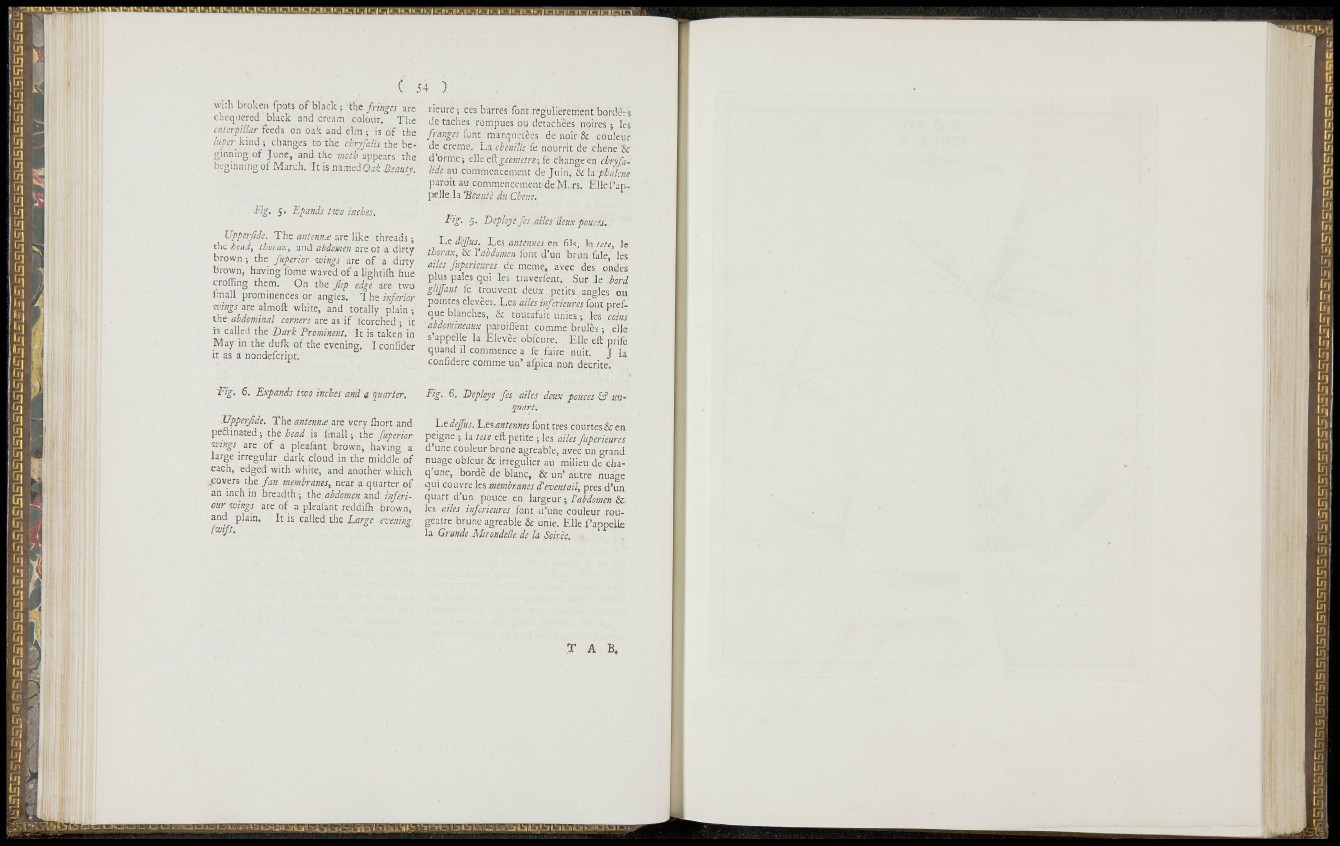
v! : >
(
with broken fpots of black 5 the fringes are
chequered black and cream colour. The
calerpiilar feeds on oak and ehn ; is of the
/Va'cT kind ; changes to the chryfalis the beginning
of June, and the appears the
bL-ginningof March. It is na;ncdOj . i Bsauty.
Fig. S. Epandi iivo inehâs.
Upperftde. The antenna are like threads;
the head, thorax, and abdomen are ot a dirty
brown ; the fuperior wings are of a dirtybrown,
having fome waved of a lightilh hue
CToffing them. On the flip edge are two
I'mali prominences or angles. 1 he inferior
wings are almoft wliite, and totally plain ;
the abdominal corners are as if icorched ; it
is called the Dark Prominent. It is taken in
May in the duilv of the evening. I confider
it as a nondefcript.
Tig. 6. Expands tzvo inches and a picrrter.
XJpperfide. The antenna! are very iliort and
peftinated ; the bead is fmall ; the fuperior
wings are of a pleafant brown, having a
large irregular dark cloud in the middle of
each, edged with white, and another which
covers the fan membranes, near a quarter of
an inch in breadth ; the abdomen and inférieur
wings are of a pleafant reddiih brown,
and plain. It is called the Large evening
fwift.
)
rieure; ces barres font regulierement borders
de taches rompues ou detach'èes noires ; les
franges font marquetées de noir & couleur
de creme. La chenille fe nourrit de chene &
d'orme; elle eft^iw/îi/ri; fe change en chryfa-
Uds au commencement de Juin, ¡k la phakne
paroitau commencement de M . rs. Ellef'an™
pelle la 'Bcmitc du Chene.
Fig. 5. Deploys fis ailes deux poucis.
^ L e diffus. Les antennes en fils, k tete, le
thorax, & l'abdomen font d'un brun fale, les
ailes fuperiei'.res de meme, avec des ondes
plus pales qui les traverfent. Sur Je ^bord
gliffant fe trouvent deux petits angles ou
pointes elevèes. Les ailes inférieures font prefque
blanches, & toucafaic unies -, les coins
abdomineaiix paroiflent comme brulès ; elle
s'appelle la Elevée obfcure. Elle eft prife
quand il commence a fe faire nuit. J la
confidere comme un' aij[3Ìca noji decrite.
Fig. 6. Déployé fes ailes deux pouces tinquart.
'Ltdeffus. l-csantennes font très courtes& peigne ; la tete eft petite ; les ailes fuperieures
d'une couleur brune agreable, avec un grand
nuage obfcur & irregulier au milieu de chaq'une,
bordé de blanc, & un' autre nuage
qui couvre les membranes d'eventail, près d'un
quart d'un pouce en largeur ; /W^î^j^^« &,
les ailes inférieures font d'une couleur rougeatre
brune agreable & unie. Elle f'appelle
la Grande Mirondelle de la Soirée,
T A B.